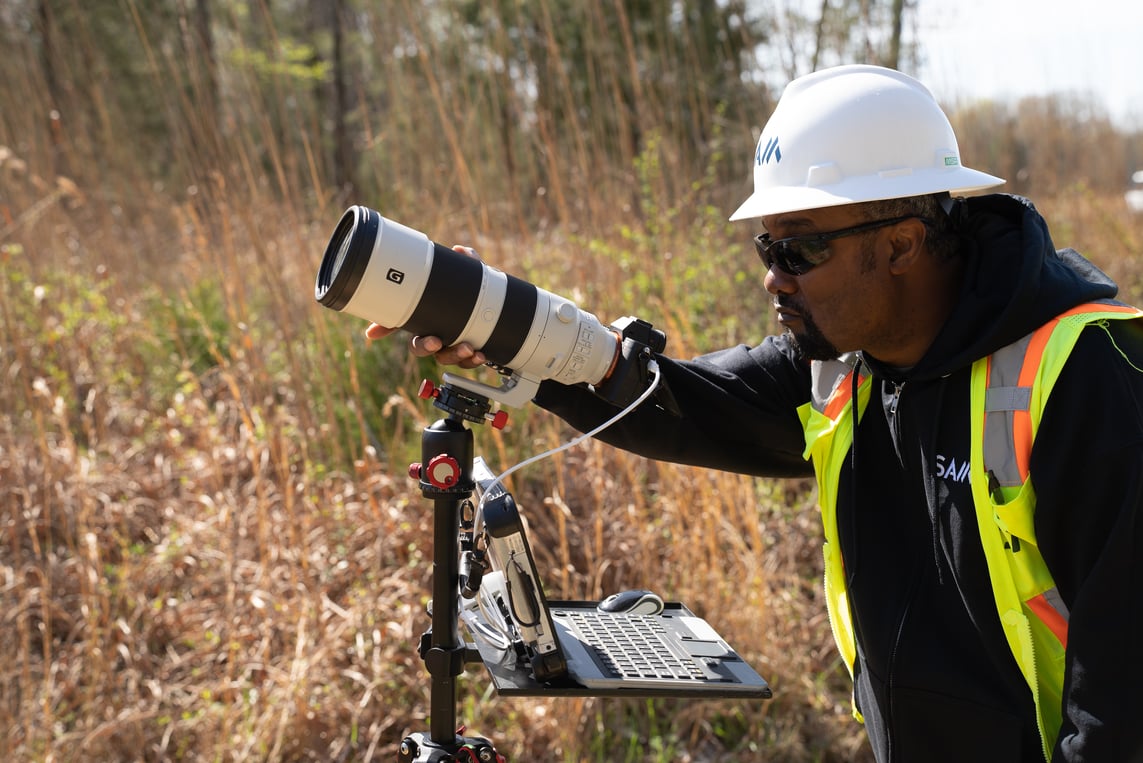Using Applied Science to Determine Facility Ratings

As the North American Electric Reliability Corporation (NERC) increases enforcement of FAC 008 guidelines, electric utilities need a cost-effective, safe, and accurate solution to maintain compliance. To meet these standards, electric utilities must identify the most limiting component as part of the entire Bulk Electric System (BES), including the conductors, jumpers, and risers. To know for certain where ampacity in a BES Facility is most limited, all components have to be examined. The most preferred method by most utilities is to use manufacturers’ data.
The Challenge
For components like transformers, switches, and circuit breakers, getting the data from the manufacturer to determine ampacity can be as simple as reading the equipment nameplate. Conductors present a much more challenging endeavor. To determine the equipment specifications, utility providers would need precise measurements of the conductor outer diameter, strand diameter, and the strand count. These data points allow a utility to, in combination with existing records such as manufacturer’s specifications, identify the conductor attributes.
Using precise measurements of the conductor’s diameter, strand diameter, and the strand count, one could, then use manufacturer tables to deduce the conductor type and, therefore, the corresponding ampacity. Measuring the conductors by hand is expensive, time-consuming, has operational impacts, and may provide safety challenges.
This was the challenge SAM’s client, asked us to help them solve, and we delivered a faster, safer, and economical solution.
Originally planned using bucket trucks and climbing crews with digital calipers, the client originally planned for a multi-year project based on the size of their system. Moreover, the cost of more traditional methods, as well as the potential need to de-energize and re-route power between substations, could have resulted in a multi-million-dollar undertaking. The more traditional methods could present additional safety concerns. Additionally, there could be access issues to some BES facilities based on the traditional methods.
SAM’s Patent-Pending Solution
When the client approached SAM to tackle this challenge, both sides knew that finding the best solution could be iterative. Before creating our patent-pending methodology, our team explored different approaches, including LiDAR and visual laser scanning, and unmanned aircraft (drones). Bryan Fitzpatrick, who has decades of experience in the GIS field, wanted to explore a different approach and contacted certified photogrammetrist Matt Thomas, who is in SAM’s Austin office. Matt created mathematical formulas that calculated the real-life measurement of the conductor using the data collected on-site. Bryan then sped up the process by creating a GIS field form using those formulas.
Once we verified the accuracy of this method, we demonstrated it to the client. Client representatives took us to conductors they knew the exact measurements of, and we correctly identified them within the +/- 0.03-inch range needed, confirming this was as accurate as a caliper. Since the client had equipment specifications available, we focused on verification rather than calculating the ampacity from scratch. However, we have also delivered accurate ampacity without existing documentation using the same technique.
Exceptional Results
Since that first successful test, our teams have:
- Collected over 10,000 measurements with proven accuracy
- Gained thousands of hours of on-site experience
- Made data management easy with proprietary application SAM InspectTM
We have discovered many advantages to this new way of collecting measurements. First, it is much safer. No one has to climb or get into a bucket truck, so there is no risk of falling. Since the crew stands far away, there is no risk of contact with energized equipment, and equipment that is being measured can stay energized. Our innovative solution reduces the number of people needed to one or two. In addition, since all the equipment necessary fits in a single backpack, our crews can walk to the conductor locations even in conditions that would be inaccessible to bucket trucks.
What has been most impressive about this method is how quickly the crews can move. The only other way to get the same level of accuracy is to climb or use a bucket truck to measure the conductors with a caliper. Using this method, you could take three or four measurements daily for $12-13 thousand per day because of the larger crew needed. Initially, we wanted to double that to six or seven measurements daily. In practice, we can take twenty measurements per day with a single person and a safety coordinator or fifty measurements with a two-person crew and coordinator. The data we collect is also available immediately, with no delay for processing or calculations in the office.
SAM’s Advanced Technology department has also integrated this methodology into our proprietary application, SAM InspectTM for data management. In addition, thanks to specialized GIS web forms, the data and documentation are at our client’s fingertips 24/7.
Impact for our Client
In the end, the client’s projected project timeline improved. Their projected cost savings versus the traditional methods mentioned earlier can be estimated in the millions of dollars. And most importantly, all the safety issues with climbing were eliminated for this project.
To learn more about SAM’s approach to client solutions, and our innovative Applied Science for Facility Ratings, visit our webpage, contact Bryan Fitzpatrick directly at BFitzpatrick@sam.biz, or fill the form below.

